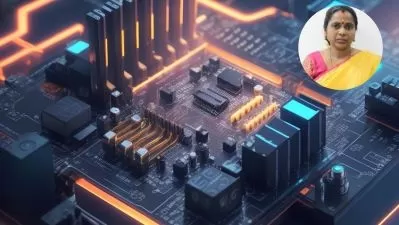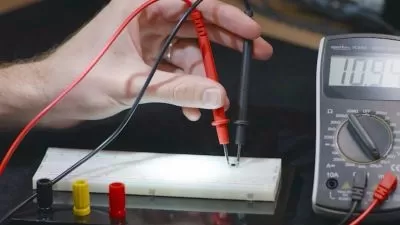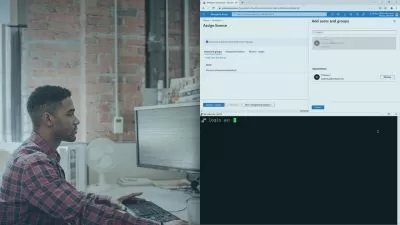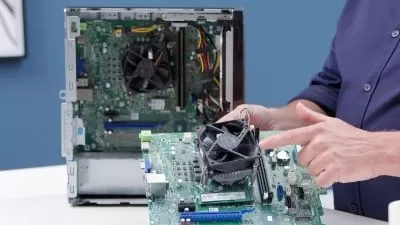Design a CPU 2
Ross McGowan
13:05:33
Description
Computer Architecture Organisation and Design
What You'll Learn?
- Mico-Coded Control Unit Design
- Addressing Modes
- Assembler in Python
- CPU Mertrics
- Labels and Declarations
- Port Mapped Input Output
- Memory Mapped Input Output
- The Stack
- Subroutines
- High Level Language Constructs in Assembly Language
- 16 Bit Machine with 90 Instructions
Who is this for?
What You Need to Know?
More details
DescriptionIn this course we take what we learned from the first course and expand on the simple 8 bit design and create a 16 bit machine with a maximum of 64 instructions with each instruction having access to 4 different addressing modes. We cover port mapped i/o and memory mapped i/o. We start using a new faster more stable version of Logisim.
The hard wired control unit is replaced with a mixed hardwired and microcoded control unit. We increase the number of general purpose registers from 4 to 6 and add in a temporary register, index register , stack pointer register and floating point unit register.
We design a new assembler in python to help us write the assembly language code with our new larger instruction set.
Finally we add on a keyboard a character display and a graphics display.
The 64 Kbyte address space is split into a ROM that contains the start of an operating system and commonly used subroutines and a RAM that contains the program code and data.
If you want to know how to build a fully functioning 16 bit machine and design some cool assembly language programs then this is the course you need to take.
Don't just read about theory and imaginary machines , build an actual machine that works. It's the best way of learning Computer Architecture Design and Organisation.
Who this course is for:
- This course is aimed at people who want to learn Computer Architecture Organisation and Design by building their very own Computer as opposed to learning from imaginary machines.
In this course we take what we learned from the first course and expand on the simple 8 bit design and create a 16 bit machine with a maximum of 64 instructions with each instruction having access to 4 different addressing modes. We cover port mapped i/o and memory mapped i/o. We start using a new faster more stable version of Logisim.
The hard wired control unit is replaced with a mixed hardwired and microcoded control unit. We increase the number of general purpose registers from 4 to 6 and add in a temporary register, index register , stack pointer register and floating point unit register.
We design a new assembler in python to help us write the assembly language code with our new larger instruction set.
Finally we add on a keyboard a character display and a graphics display.
The 64 Kbyte address space is split into a ROM that contains the start of an operating system and commonly used subroutines and a RAM that contains the program code and data.
If you want to know how to build a fully functioning 16 bit machine and design some cool assembly language programs then this is the course you need to take.
Don't just read about theory and imaginary machines , build an actual machine that works. It's the best way of learning Computer Architecture Design and Organisation.
Who this course is for:
- This course is aimed at people who want to learn Computer Architecture Organisation and Design by building their very own Computer as opposed to learning from imaginary machines.
User Reviews
Rating
Ross McGowan
Instructor's Courses
Udemy
View courses Udemy- language english
- Training sessions 51
- duration 13:05:33
- Release Date 2023/07/29

















